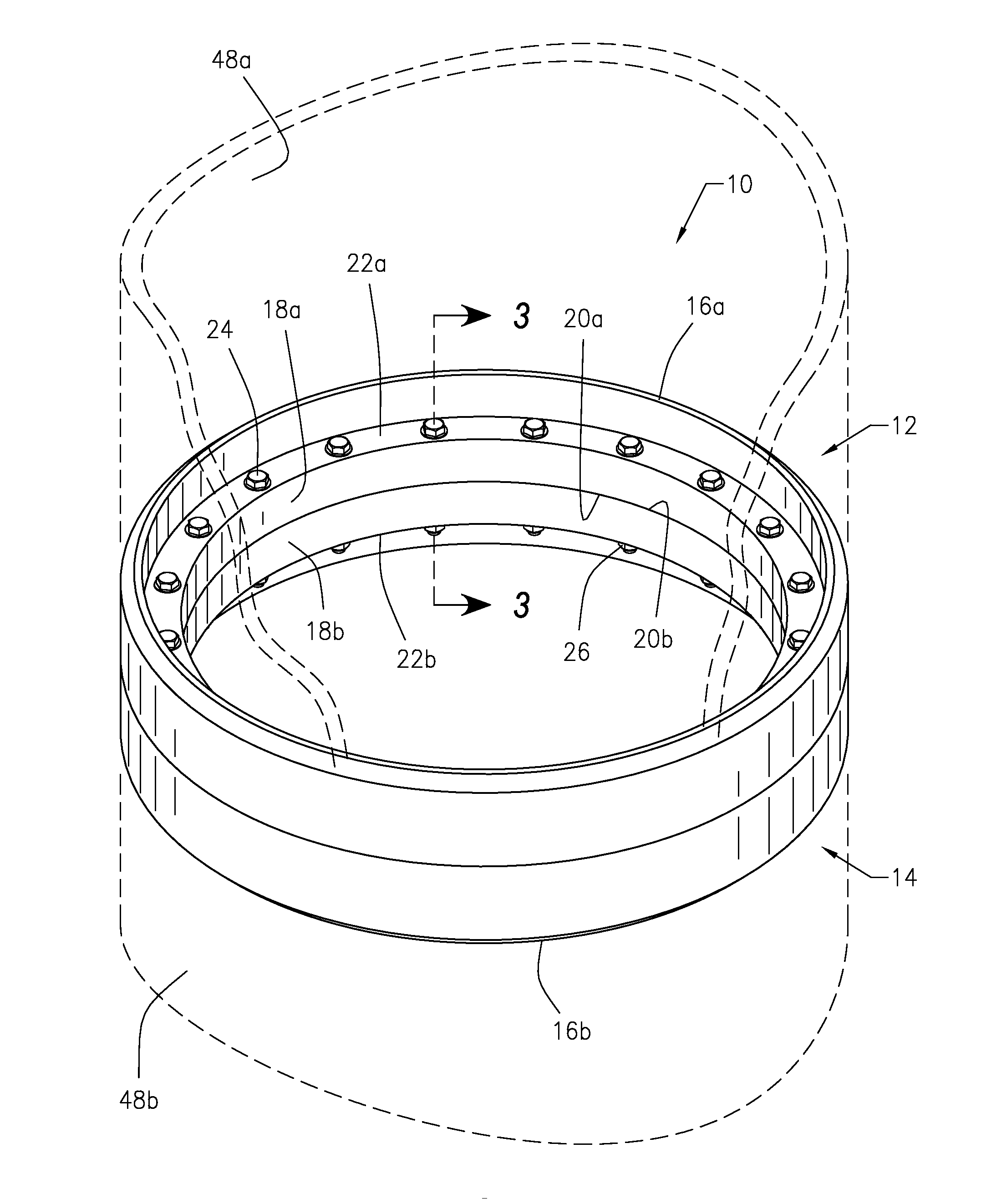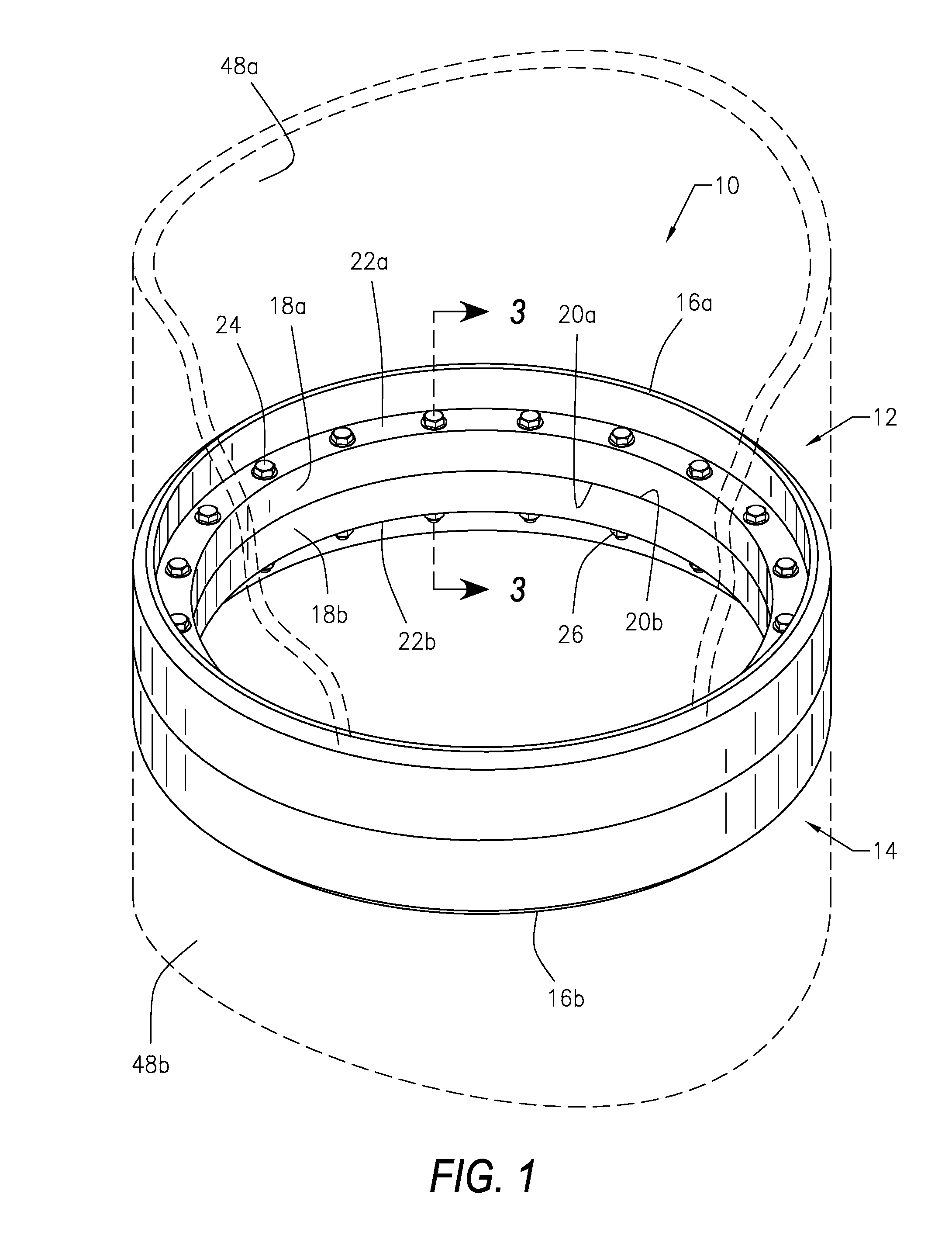Structural flange connection system and method
a technology of connecting system and flange, applied in the direction of mechanical equipment, building repairs, machines/engines, etc., can solve the problems of compromising clamping load, flange contact surfaces not being ideal plane, and more problems with wind turbine tower design
- Summary
- Abstract
- Description
- Claims
- Application Information
AI Technical Summary
Benefits of technology
Problems solved by technology
Method used
Image
Examples
Embodiment Construction
[0044]The systems and methods discussed herein are merely illustrative of specific manners in which to make and use this invention and are not to be interpreted as limiting in scope.
[0045]While the systems and methods have been described with a certain degree of particularity, it is to be noted that many modifications may be made in the details of the construction and the arrangement of the structural and functional devices, components and / or steps without departing from the spirit and scope of this disclosure. It is understood that the systems and methods are not limited to the embodiments set forth herein for purposes of exemplification.
[0046]Referring to the figures of the drawings, wherein like numerals of reference designate like elements throughout the several views, and initially to FIG. 1, a structural flange connection system and method 10 utilizes structural flanges 12 and 14 having a mechanical bond that manages and assists the retention of bolt preloads and eliminates mo...
PUM
 Login to View More
Login to View More Abstract
Description
Claims
Application Information
 Login to View More
Login to View More - R&D
- Intellectual Property
- Life Sciences
- Materials
- Tech Scout
- Unparalleled Data Quality
- Higher Quality Content
- 60% Fewer Hallucinations
Browse by: Latest US Patents, China's latest patents, Technical Efficacy Thesaurus, Application Domain, Technology Topic, Popular Technical Reports.
© 2025 PatSnap. All rights reserved.Legal|Privacy policy|Modern Slavery Act Transparency Statement|Sitemap|About US| Contact US: help@patsnap.com



